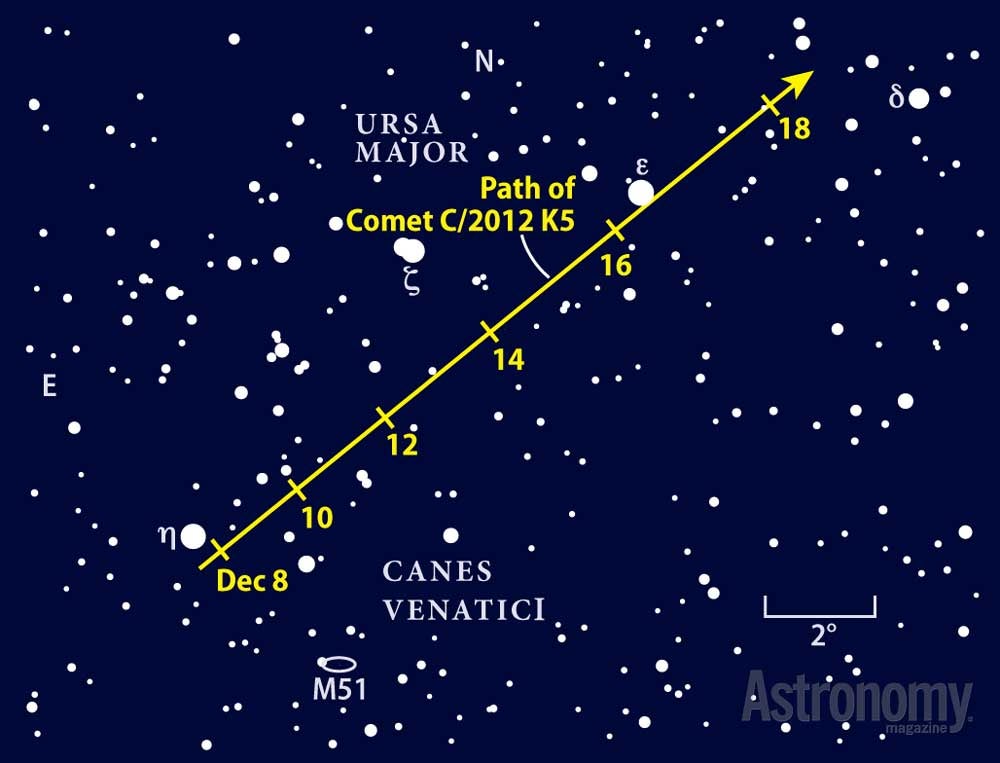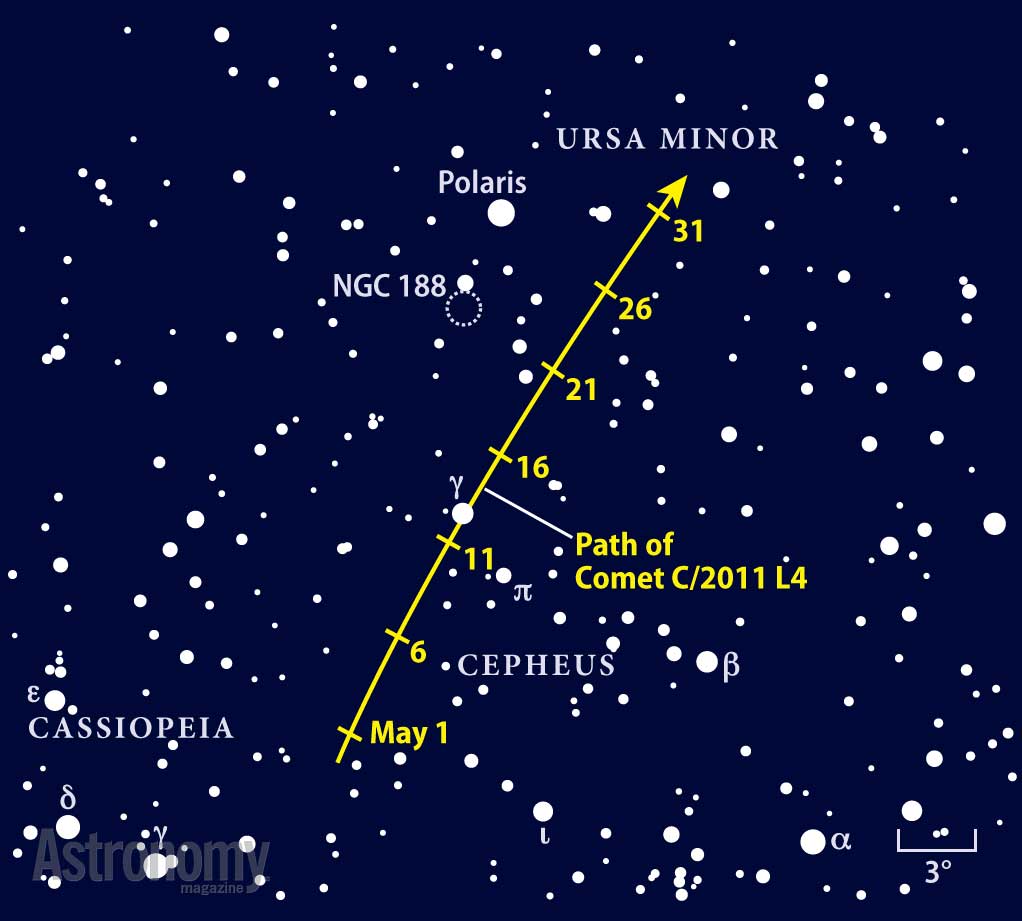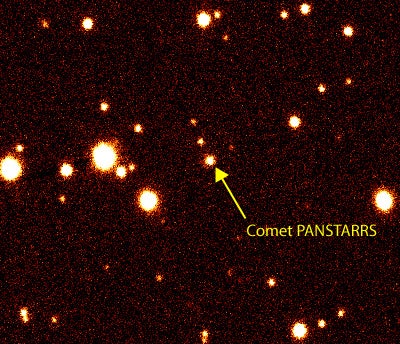Researchers discovered this comet June 6, 2011, on images taken through the 1.8-meter Panoramic Survey Telescope and Rapid Response System (Pan-STARRS) on Haleakala in Hawaii. At the time, the object glowed dimly at 19th magnitude. But its time as an inconspicuous visitor from the distant Oort Cloud will soon be over.
For complete coverage of Comet PANSTARRS, visit www.astronomy.com/panstarrs.
If predictions hold true — never a sure thing when it comes to comets making their first trip through the inner solar system — PANSTARRS ill become a superb object when viewed through binoculars and probably an impressive naked-eye sight. It could peak as bright as magnitude 0 during the first half of March, although some estimates now are a more conservative magnitude 3.
On the 1st, the comet glows at 7th magnitude. It will brighten — perhaps
to 2nd magnitude — and track rapidly eastward throughout the month.
Early morning observers south of the equator will find it passing
through southern Sagittarius, Corona Australis, Microscopium, Grus, and Piscis Austrinus.
The
comet pushes northward during March, and at midmonth it becomes visible
in the evening sky for Northern Hemisphere observers. If it reaches its
predicted brightness, it may appear around March 6 or 7, although only a
degree above the western horizon 30 minutes after sunset. Each
following day, the comet climbs 1° to 2° higher, which dramatically
improves its visibility. By the time it reaches perihelion (its closest
approach to the Sun) March 9/10, Comet PANSTARRS lies 7° high in the west 30
minutes after sunset and could shine at magnitude 0. As dusk soaks up
the Sun’s rays and the sky darkens, the comet’s ethereal tail may come
into view.
From perihelion to the end of March, the comet moves almost due north through Pisces and Andromeda
while its brightness drops by about a magnitude every five days. The
tail of Comet PANSTARRS swings through 90°, turning from east to north.
Depending on how much dust the comet produces, this could create a nice
broad dust tail to go along with a finer, straighter gas tail.
comet should fade to 4th magnitude by early April, which would make the
extended object visible only through binoculars or a telescope. It
passes 2.5° west of the Andromeda Galaxy (M31) on the 3rd, then crosses
into Cassiopeia on the 9th.
To learn even more about Comet PANSTARRS, pick up the March 2013 Astronomy,
on newsstands this February. And as good as C/2011 L4 could be, it will
be only the second-best comet of 2013. Astronomers are predicting that
C/2012 S1 (ISON) could peak as bright as magnitude –12 in late November.
To learn more about this potentially great comet, see the article in
the January 2013 Astronomy.
- Special Coverage: Find everything you need to know about Comet PANSTARRS in Astronomy.com’s Year of the Comet section.
- Video: Get ready for 2013’s first naked-eye comet, with Senior Editor Richard Talcott
- StarDome: Locate Comet C/2011 L4 (PANSTARRS) in your night sky with our interactive star chart. To ensure the comet is displayed, click on the “Display…” drop-down menu under Options (lower right) and make sure “Comets” has a check mark next to it. Then click the “Show Names…” drop-down menu and make sure “Comets” is checked there, too.
- Images: Submit images of Comet PANSTARRS to our Online Reader Gallery.
- Discussion: Ask questions and share your observations in our Reader Forums.
- Sign up for our free weekly e-mail newsletter.













